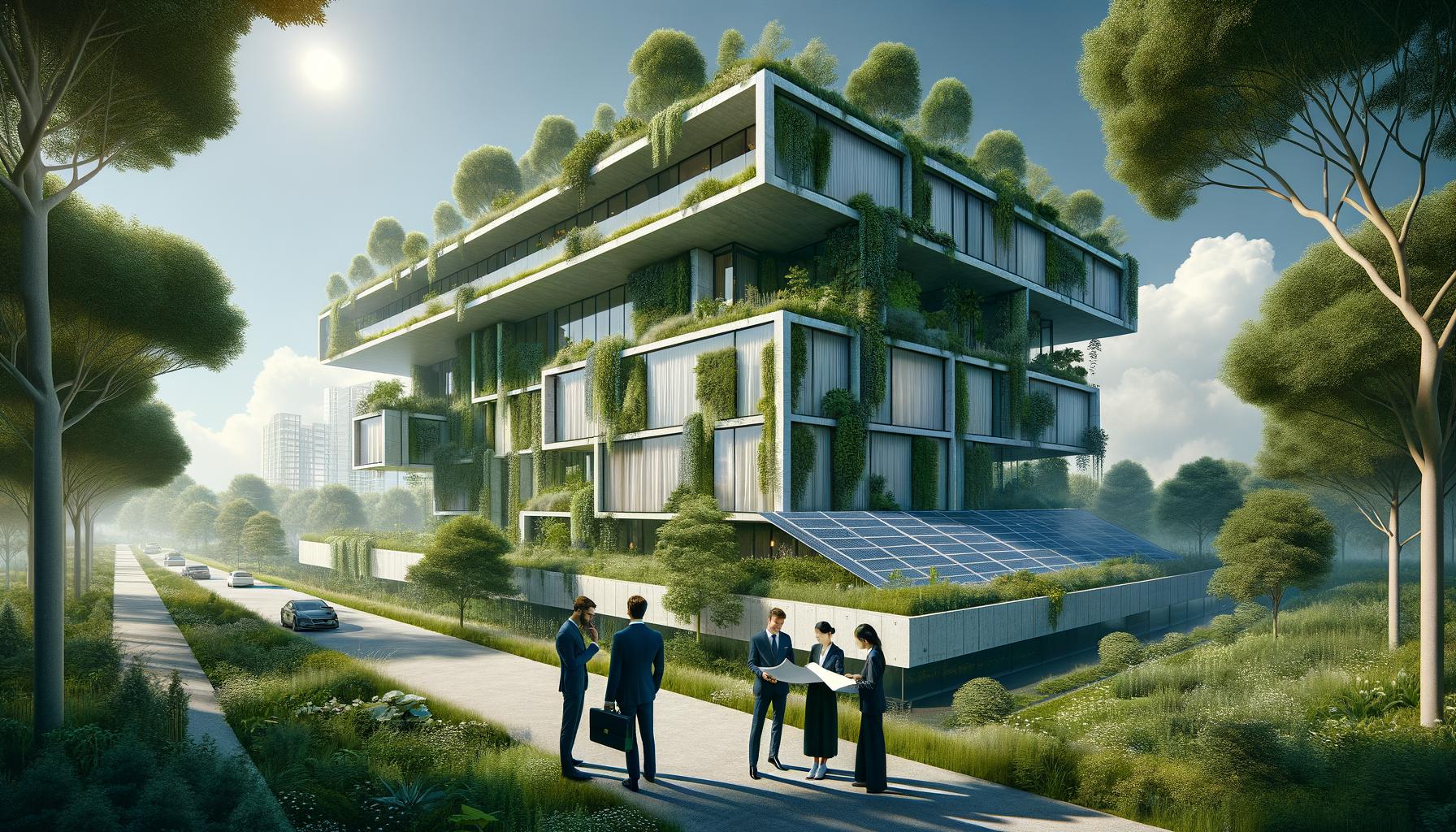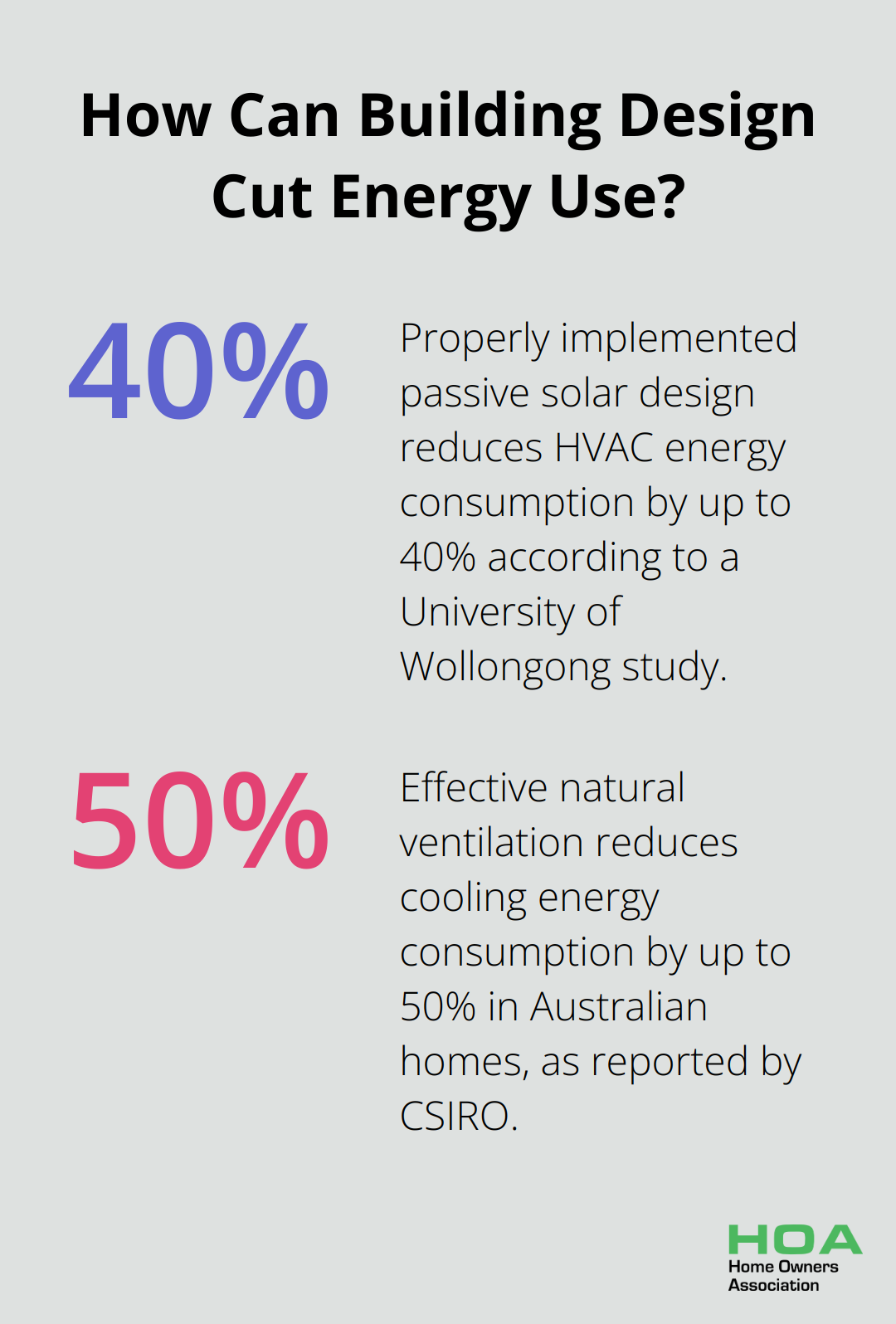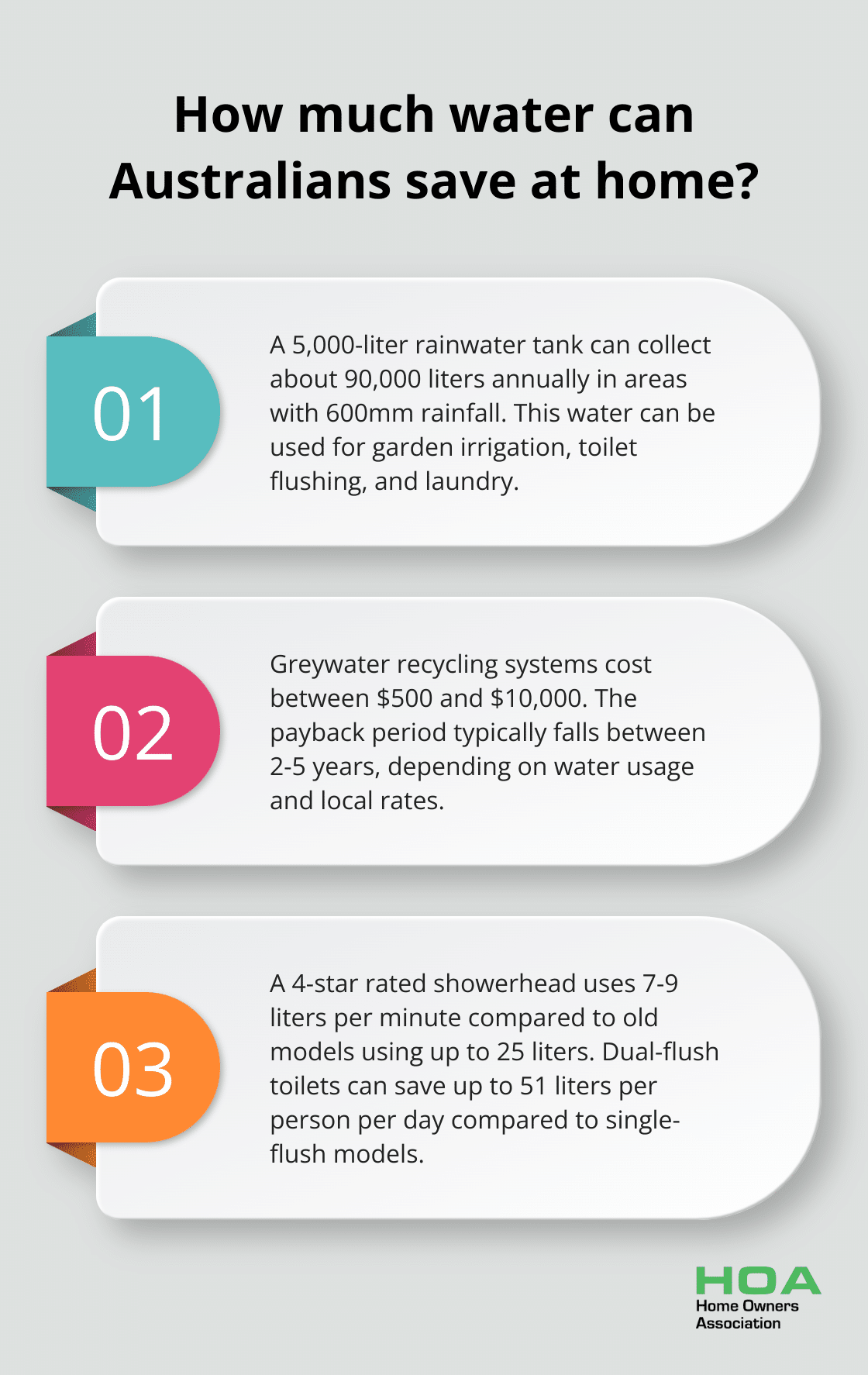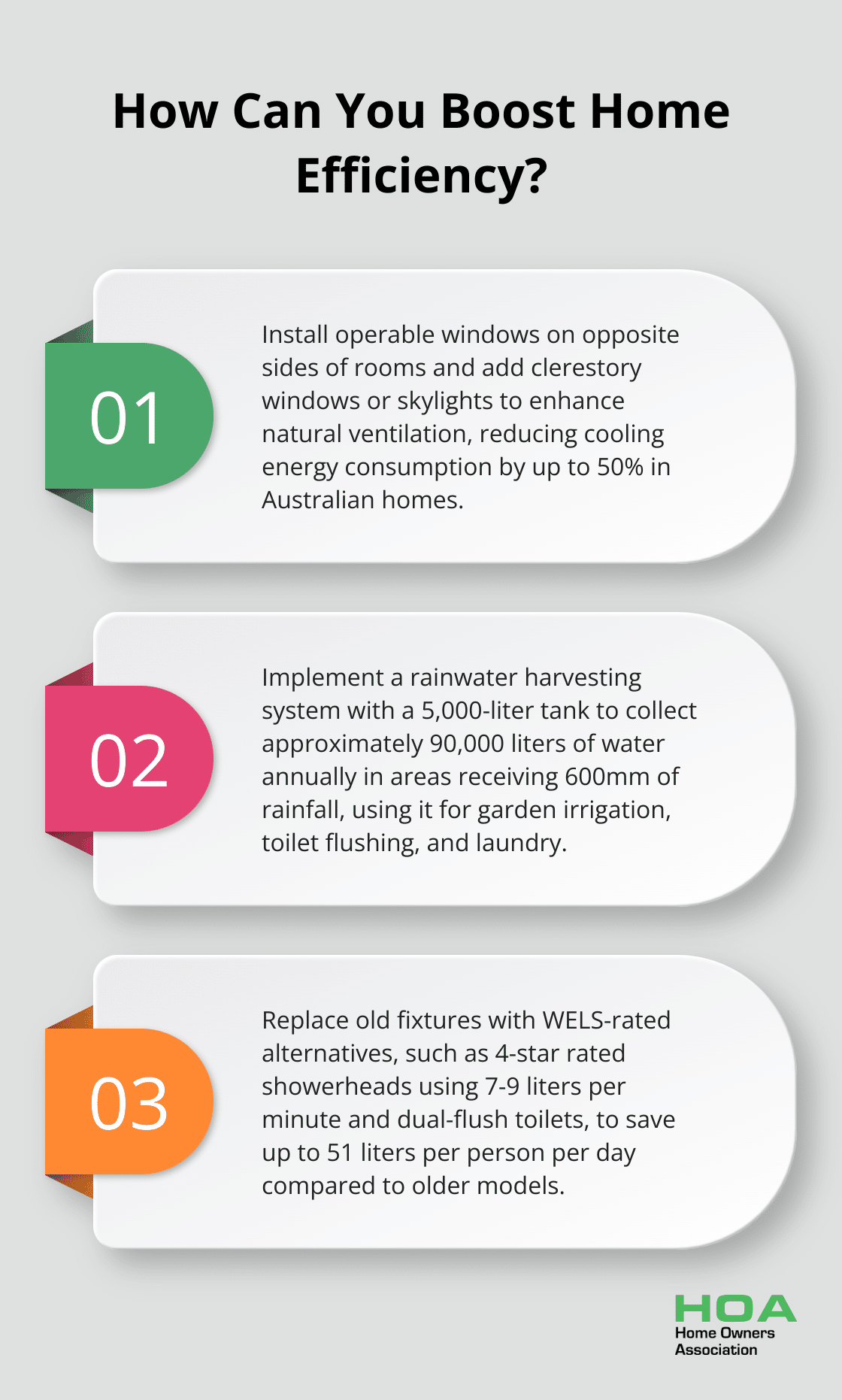
At Home Owners Association, we’re committed to promoting sustainable living practices. The construction industry is evolving rapidly, with a growing focus on eco-friendly solutions.
Best practices in sustainable building design are reshaping how we approach residential and commercial projects. This blog post explores cutting-edge materials, energy-efficient strategies, and water conservation techniques that are transforming the built environment.
Sustainable Building Materials: Eco-Friendly Choices for Modern Construction
At Home Owners Association, we’ve observed a significant increase in members seeking advice on incorporating sustainable materials into their projects. The construction industry is undergoing a transformation, with eco-friendly alternatives gaining prominence. These materials reduce environmental impact without compromising quality or durability.
Recycled and Reclaimed Materials: A Second Life for Resources
Recycled and reclaimed materials stand at the forefront of sustainable construction. Recycling steel saves the equivalent energy to power about 18 million households for a year. More than 80 million tons of steel are recycled each year, underscoring the substantial environmental benefits of choosing recycled options.

Reclaimed wood adds character to homes while preventing deforestation. Many homeowners have successfully integrated recycled plastic lumber for decking projects. This material outlasts traditional wood and eliminates the need for harmful chemical treatments.
High-Performance Insulation: Efficiency Meets Sustainability
Energy-efficient insulation plays a key role in sustainable building. Cellulose insulation, derived from recycled paper products, offers excellent thermal performance while diverting waste from landfills. Sheep’s wool has gained popularity as a natural insulator among eco-conscious builders. Its renewable and biodegradable properties, coupled with natural fire resistance, make it an attractive option (without the need for chemical treatments).
Innovative Eco-Friendly Alternatives: The Future of Construction
Bamboo flooring has emerged as a sustainable alternative to hardwood. This fast-growing grass reaches maturity in just 3-5 years (compared to 20-120 years for traditional hardwoods), making it a rapidly renewable resource.
Mycelium composites are emission-free, nontoxic, low cost, and recyclable. While still in early stages of development, it has potential applications in insulation and even structural components.
Hempcrete, a biocomposite made of hemp hurds and lime, offers another innovative solution. This carbon-negative material absorbs more CO2 during growth than it emits during production. Some homeowners in rural areas have successfully used hempcrete for non-load bearing walls, reporting excellent insulation properties and improved indoor air quality.
Environmental Impact: The Bigger Picture
The Global Alliance for Buildings and Construction reports that the building sector accounts for 39% of energy-related CO2 emissions. Choosing sustainable materials represents a concrete step towards mitigating this impact.
Home Owners Association remains committed to helping members navigate the world of sustainable building materials. Our trade partnerships often include suppliers of these eco-friendly options, allowing members to access these materials at competitive prices.
As we move forward, the next chapter will explore energy-efficient design strategies that complement these sustainable materials, creating homes that are not only environmentally responsible but also comfortable and cost-effective to maintain.
Energy-Efficient Design: Transforming Australian Homes
At Home Owners Association, we witness how energy-efficient design strategies revolutionize homes across Australia. These approaches reduce energy consumption, create more comfortable living spaces, and lower utility bills for homeowners.
The Power of Passive Solar Design
Passive solar design maximizes natural light and heat, reducing reliance on artificial lighting and heating systems. In Australia’s sun-rich climate, this approach proves particularly effective.

A University of Wollongong study found that properly implemented passive solar design reduces heating, ventilation, and air conditioning (HVAC) energy consumption by up to 40%. This translates to substantial savings on energy bills and a reduced carbon footprint.
To implement passive solar design:
- Optimize window placement and size on the north-facing side of your home to capture winter sun and provide shade in summer.
- Use thermal mass materials like concrete floors or brick walls to absorb heat during the day and release it at night.
- Install appropriate shading devices such as awnings or deciduous trees to block summer sun while allowing winter sun to penetrate.
Natural Ventilation: A Breath of Fresh Air
Natural ventilation cools and freshens indoor spaces without relying on energy-intensive air conditioning systems. The Commonwealth Scientific and Industrial Research Organisation (CSIRO) reports that effective natural ventilation reduces cooling energy consumption by up to 50% in Australian homes (improving indoor air quality and occupant comfort).
To enhance natural ventilation:
- Install operable windows on opposite sides of rooms to encourage cross-ventilation.
- Add clerestory windows or skylights to create a stack effect, drawing hot air upwards and out of living spaces.
- Use ceiling fans in conjunction with natural ventilation to enhance air movement and cooling effects.
Smart Technology for Energy Efficiency
Smart building systems and automation allow for precise control of energy use, optimizing comfort while minimizing waste. Energy Networks Australia notes that smart home technologies can reduce the visibility of household energy consumption and costs, with most household members unlikely to see energy bills.
Effective smart home technologies include:
- Smart thermostats that learn your preferences and adjust heating and cooling accordingly.
- Automated lighting systems that respond to occupancy and natural light levels.
- Energy monitoring systems that provide real-time feedback on energy consumption, allowing for informed decision-making.
Home Owners Association partners with leading suppliers of these smart technologies, offering members exclusive discounts and expert advice on implementation.
The combination of passive solar design, natural ventilation, and smart home technologies creates truly energy-efficient homes. These strategies reduce environmental impact, enhance living comfort, and provide long-term financial benefits through reduced energy bills.
Water conservation techniques play an equally important role in eco-friendly home design. The next chapter explores innovative ways to manage this precious resource efficiently in Australian homes.
Water-Wise Building: Conserving Australia’s Precious Resource
At Home Owners Association, we recognize the critical importance of water conservation in Australian homes. With increasing water scarcity and rising utility costs, water-saving measures are essential for sustainable living.
Rainwater Collection Systems: Harvesting the Sky
Rainwater harvesting transforms water management for Australian homeowners. Research suggests that households with rainwater tanks can achieve significant water savings compared to those without. A rainwater harvesting system installation can potentially reduce reliance on municipal water supplies and lower water bills.

A typical 5,000-liter tank collects about 90,000 liters of water annually in areas receiving 600mm of rainfall. This collected water suits garden irrigation, toilet flushing, and laundry use. Some homeowners even use it for drinking water after proper filtration and treatment.
When installing a rainwater harvesting system, consider:
- Tank size and material (polyethylene, concrete, or steel)
- Filtration systems to ensure water quality
- Pump selection for efficient water distribution
Greywater Recycling: Giving Water a Second Life
Greywater recycling gains traction in Australian homes. Recent studies indicate that greywater reuse can lead to increased resilience and adaptability of local water systems, reduction in transport costs, and achievement of fit-for-purpose water use.
A simple greywater diversion system costs as little as $500, while more complex treatment systems range from $3,000 to $10,000. The payback period varies but typically falls between 2-5 years, depending on water usage and local water rates.
Key considerations for greywater systems include:
- Local regulations and permits
- Appropriate plant selection for greywater irrigation
- Regular maintenance to prevent system clogging
High-Efficiency Fixtures: Small Changes, Big Impact
Upgrading to water-efficient fixtures and appliances conserves water effectively. The Water Efficiency Labelling and Standards (WELS) scheme helps Australians identify products that use water efficiently.
Replacing old fixtures with WELS-rated alternatives leads to substantial savings:
- A 4-star rated showerhead uses 7-9 liters per minute, compared to old models using up to 25 liters per minute.
- Dual-flush toilets save up to 51 liters per person per day compared to single-flush models.
- Front-loading washing machines typically use 50% less water than top-loaders.
These upgrades not only conserve water but also reduce energy consumption for water heating, resulting in lower utility bills across the board.
Water conservation in building design secures a sustainable future for Australia. Implementing these strategies contributes to the preservation of our most precious resource while providing the benefits of lower utility costs and increased property value.
Final Thoughts
Sustainable building design transforms the construction industry with innovative solutions that benefit homeowners and the environment. Best practices in sustainable building design include eco-friendly materials, energy-efficient strategies, and water conservation techniques. These practices reduce environmental impact, minimize energy consumption, and preserve precious resources.

Sustainable practices offer long-term benefits for homeowners and the environment. Reduced energy and water consumption lead to lower utility bills, while durable, eco-friendly materials can increase property value. These practices contribute to reduced carbon emissions, conservation of natural resources, and improved air and water quality.
We at Home Owners Association encourage our members to implement sustainable design principles in their future projects. Every step towards sustainability makes a difference, whether you plan a new build, renovation, or simple home improvements. Together, we can create homes that are comfortable, cost-effective, and environmentally responsible.





